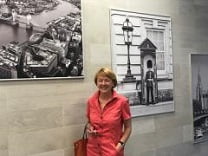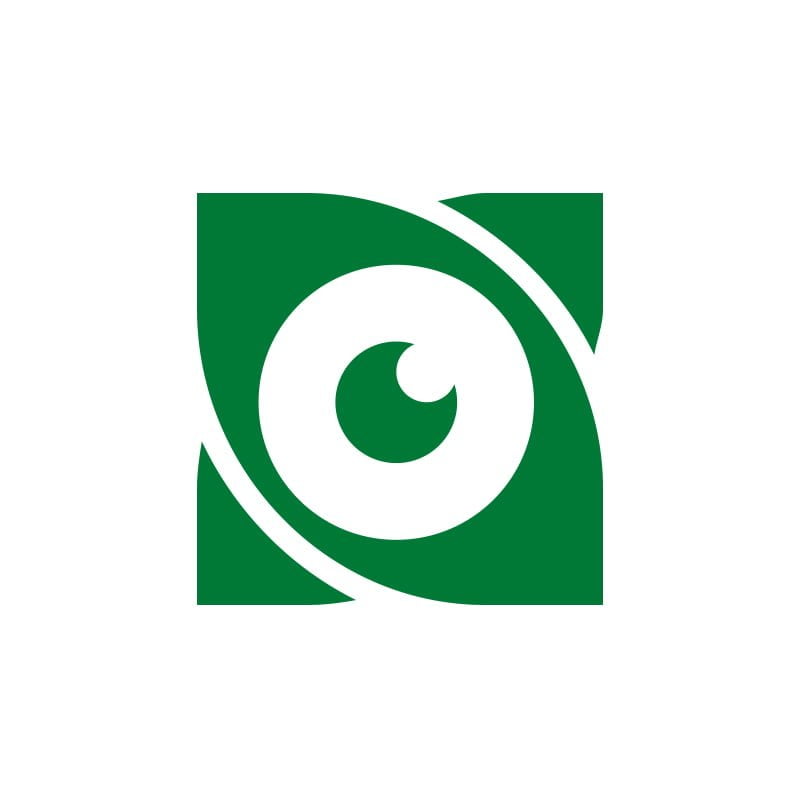- Services
- Children Department
Diagnosis of child eye diseases
ZLATA Children's Clinic welcomes its youngest visitors!
What can be more valuable than the sparkle of your child’s happy eyes?
Pediatric comprehensive examination
PRICE FROM:
1350
UAH
- for children from 3 to 16 years old
- all examinations with ophthalmic instruments are included
- doctor's consultation with fundus examination
- duration up to two hours
Pediatric comprehensive examination includes:
- video recording of eye position for strabismus
- determination of the growth dynamics of the eyeball
- precise diagnosis of astigmatism based on topographic data
- determination of refraction of the eye under fractional cycloplegia
- detailed examination of the fundus oculi under cycloplegia conditions
- selection of topical spectacle correction
- consultation with a pediatric ophthalmologist
- recommendations for treatment and follow-up appointments
Our clinic provides opportunities for eye examinations for children from the age of 2-3 years. In our work we use modern techniques and developments in the field of pediatric ophthalmology.
In a comfortable and friendly atmosphere we will conduct individual diagnostics for your child – we will determine the visual acuity of each eye (separately check the far and near vision). Even the most shy and capricious child participates in our game-examination with great interest, not noticing how during this fun game we learn everything about his/her wonderful eyes!
That is why you can entrust us with the most valuable thing of all – your children’s health! Give them all the brightest colors of life! And we will be glad to help you with this! Call us and get detailed information about our special offer.
Consultations
Over the years we have provided hundreds of thousands of eye care services to our patients.
By choosing British Eye Clinic you can be ensured of the quality of services, as you are entrusting your vision to a modern clinic
Orthoptic treatment programs:
Orthoptic treatment is provided only to patients who have undergone a diagnostic examination at the clinic as recommended by the ophthalmologists, and after surgical correction of strabismus performed at the clinic.
"Amblyopia"
Purpose of work.
- Adapting the child to performing daily occlusion
- Stimulation of compliance and motivation of the child and his/her parents to perform long-term vision therapy
- Achieving maximum correctable visual acuity in far and near
- Consolidation of the stability of visual function over time
- Development of binocular vision
- Stimulation of fine motor skills and “Hand-Hand-Brain” coordination system in preschool children
- Achieving the visual acuity of the child at the level of the age norm
- Increase of brain plasticity, maturity and readiness for schooling
Training devices used
- Personalized occlusion therapy* (individual calculation of occlusion time in relation to the amblyopia degree and the age of the child)
- LED retinal stimulator CPC-1
- Software package “Oculist” (“Pleoptics-2”, “Galaxy-3”, “Tir-3”, “Ice-2”, “Cross-2”, “Darts-2”, “Eye”)
Conditions
- Any degree of amblyopia or age-related visual impairment
- Lack of compliance, intolerance to glasses and occlusion therapy at home
- Lack of binocular vision
Session duration
30-40 minutes daily
Course duration
10-15 sessions
Frequency of training
Quarterly
Performance evaluation
Issuance of a report with complete objective data on the dynamics of growth of visual acuity in the far and near amblyopic eye, as well as the state of binocular vision at the end of the course
"Strabismus"
Purpose of the exercises
- Development and consolidation of bifixation
- Training of fusional reserves
- In the presence of stable fusion – development of stereoscopic depth of vision
Used training devices
- Synoptophore
- Computer program “Blade” with the use of haploscopic glasses with color filters
- Oculist software package (programs “Eye”, “Zebra”, “Stereopsis“)
- Combined prismatic device “Bernell-o-Scope“
Conditions
- Partial accommodative and accommodative convergent strabismus
- Divergent latent strabismus with an unstable angle of deviation
- Production of bifoveolar fusion after surgical correction of strabismus
Session duration
30-40 minutes daily
Course duration
10-15 sessions
Training frequency
Quarterly, 2-4 times a year
Results evaluation
Issuance of a report with complete objective data on the dynamics of orthoptical status and binocular vision at the end of the course
"Amblyopia + Strabismus"
Purpose of the exercises
- Adaptation of the child to daily occlusion, increased compliance with long-term visual therapy
- Achievement of maximum corrected visual acuity in far and near vision
- Consolidation of the stability of visual functions in dynamics
- Development and consolidation of bifixation, binocular and stereoscopic vision
- Training of fusion reserves
Training devices used
- Personalized occlusion therapy* (individual calculation of the occlusion time in relation to the amblyopia degree and the age of the child)
- LED retinal stimulator CPC-1
- Oculist software package (“Pleoptics”, “Galaxy”, “Tir”, “Ice”, “X”, “Eye”)
- Synoptophore
- Computer program “Blade” with application of haploscopic glasses with color filters
- Combined prismatic device “Bernell-o-Scope“
Conditions
- Presence of any degree of amblyopia, Intolerance of occlusion therapy at home
- Lack of binocular vision
- Partial accommodative and accommodative strabismus
- Divergent latent strabismus with an unstable angle of deviation
- Bifoveolar fusion after surgical correction of strabismus
Session duration
30-40 minutes daily
Course duration
10-15 sessions
Training periodicity
Quarterly or individually as indicated
Results evaluation
Statement with objective data on the dynamics of visual acuity growth in far and near amblyopic eyes, as well as the state of binocular vision at the end of the course
Prices for diagnosis of eye diseases for children
| Service | Price in UAH. |
|---|---|
| Comprehensive inspection | 1350 |
| For children from 3 to 16 years old All examinations with ophthalmologic instruments and doctor`s consultation with examination of eye fundus are included (duration up to two hours). Examination includes: determination of compliance of child's visual functions with the age norm, video registration of eye position in case of strabismus, determination of eyeball growth dynamics, precise diagnostics of astigmatism presence according to topographic data, refraction of eyes under cycloplegia, detailed examination of eye fundus under cycloplegia, selection of actual spectacle correction, consultation with children ophthalmologist, recommendations on treatment and terms of further monitoring. | |
| Screening of the vision before the school year (schoolchildren) | 900 |
| + issuance of certificate The examination includes: conducting refractometry without cycloplegia, a child's visual acuity determination by the test corresponding to his age, visual acuity determination with a trial correction, stereo vision determination (the Lang standard test). The screening makes it possible to determine in a relatively short period of time: the child's vision is normal, the vision is impaired, there is amblyopia in one or both eyes, astigmatism, no binocular vision. If these abnormalities are detected - the child is recommended to make an appointment for a full diagnostic examination as a matter of routine. Please note that the format of the screening examination does not include a doctor's report, but a certificate for school is issued. | |
| Vision screening for patients aged 3-4 years | 1000 |
| (before preschool) + issuing a certificate The purpose of the examination is to try to determine the child's visual function, to detect a difference between both eyes - the formation of amblyopia ("lazy" eye). This examination also includes video recording of the child's eye position during fixation. Early screening is especially recommended for babies with ophthalmologic pathology and spectacle correction in older children in the family. | |
| Post-screening follow-up exams | 1000 |
FAQ:
The friendly and professional paediatric ophthalmologists at the British Eye and Ear Infirmary provide advice and complete instrumental diagnostic examinations for young patients aged three years and older.
Preventive examinations of healthy children are carried out in the polyclinic at the place of residence at one month and one year.
Preventive medical examinations in kindergartens and schools are aimed at detecting only gross, pronounced pathology, far advanced disease. That is why the initial stages of such serious conditions as amblyopia, strabismus, astigmatism, retinoblastoma, etc. cannot be discovered during preventive examinations. On the basis of today’s world experience we recommend an annual check-up of the child’s visual system for early detection and timely treatment of all eye diseases.
Little patients do not complain about eye problems, so parents should be especially attentive if:
- The child rubs his eyes frequently;
- Squeezes one eye when outdoors;
- Does not follow a moving object;
- A child’s eyes often turn red;
- A child’s eye deviates to any side, even erratically;
- the child tilts or turns his head when looking straight ahead;
- the child’s eyes twitch, even erratically;
- the child has diabetes;
- the right eye differs from the left eye in any way (size, appearance, pupil diameter);
- in flash photographs, the child’s one pupil glows pink and the other glows white;
- Any trauma to the eye has occurred.
If you notice any of these symptoms in your child, you should see a pediatric ophthalmologist at our clinic.
Of course you can. Our clinics has reliable, generally accepted Lea and Cardiff tests which allow us to evaluate visual acuity in a child of any age, regardless of whether the child is talking or not.
Drops to dilate the pupil are necessary to properly assess the optical properties of the eye and to fully examine the fundus (retina and optic nerve). The British Ophthalmological Center uses special drops that are practically non-irritating to the eyes and do not cause allergic or adverse reactions. After such examination the child does not need to be released from school work for the next day.
More often than not, yes. Usually, such complaints arise from “hidden” farsightedness, myopia or astigmatism. In such a situation, it is necessary to examine the child by a pediatric ophthalmologist.
No, it cannot. If strabismus is not treated in time, the whole visual system of the child will be roughly and irreversibly impaired. This imperfect vision restricts the young person’s life and professional activities. Our team of specialists is capable to detect and cure strabismus in a small patient in time.
If a child has optical power disorders (myopia, hyperopia, astigmatism) then glasses are the main “remedy” and give the child an opportunity to grow and develop properly. With hyperopia, as the child grows, the glasses are loosened and there is an opportunity to get rid of them completely. Myopia and astigmatism of any degree will be reliably corrected after the patient reaches 18 years of age through laser correction. Our specialists are all leaders in laser vision correction.
Yes it is. British Ophthalmological Center has a set of modern, highly effective devices for amblyopia, strabismus, myopia, hyperopia and astigmatism treatment. Based on the results of diagnostics, a pediatric ophthalmologist will prescribe an individual treatment and prevention program for your child.
Book consultation in our clinic
Відгуки пацієнтів
Британського офтальмологічного центру
Можно я скажу, что в современном мире есть безукоризненный медицинский центр – «Британский офтальмологический центр». Огромная благодарность Щадных Марине Александровне. Вы с ювелирным профессионализмом и человеческим теплом вернули мне возможность уверенного взгляда в будущее. Всем сотрудникам, которые сопровождали до и во время операции, я желаю здоровья и личных побед.
Щира подяка всьому колективу Британського офтальмологічного центру за допомогу моїй мамі в лікуванні катаракти. Моя родина і я сам вже декілька років обслуговуємся в даній клініці і всім задоволені. Тому, коли стало питання про лікування у мами катаракти - без жодних вагань привезли її до Києва в Британський офтальмологічний центр. Наші очікування здійснилися. Операція пройшла чудово і мама наразі знову добре бачить. До неї повернулась «якість» життя. Вона і я дуже вдячні Скапі В.І. і всім лікарям клініки з якими ми пройшли цей шлях за професійність. А також персоналу що працює на рецепції, в колл-центрі та який допомагає лікарям в повсякденному житті за доброзичливість і турботу.

